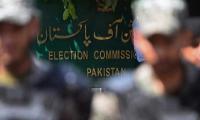Speaking at a book launch, General Ehsanul Haq, the former chairman Joint Chiefs of Staff Committee (JCSC), warned against India shedding its pretence of the ‘no first use’ (NFU) of nuclear weapons in the event of a future war with Pakistan.
India had announced this policy in 2003. However, Pakistan never took it seriously and considered it to be an attempt to persuade the US to drop economic sanctions which had been imposed in the wake of nuclear tests in 1998. In recent years, India and the US have become strategic allies while Pakistan has been discriminated against in global non-proliferation regime issues.
Initially, India and Pakistan’s strategic doctrines were dictated by long-range, ‘city-destroying’ missiles held by each side. It was, therefore, certain that if one country resorted to a nuclear attack, the other would retaliate by attacking its major population centres. In such a strategic deterrence equation, India – with its superiority in conventional forces – saw no particular disadvantage since it could still pursue Pakistan-centric policies in an unfettered manner. As a result, it opted for the moral high ground to declare an NFU policy.
Since then, Pakistan – compelled by security imperatives in the face of the Cold Start doctrine – has miniaturised nuclear warheads to forestall a potentially disastrous situation. This measure improved Pakistan’s external security situation. These improvements were rather tenuous as Pakistan hypothesised that if it used a relatively low-yield battlefield strike weapon on its own territory to defend its sovereignty, India would not escalate to an all-out nuclear war. India assumed that it could pursue its nefarious designs against Pakistan under what it called a ‘nuclear overhang’. Both these assumptions were highly dubious – if not downright flawed – as no one has ever accurately predicted the dynamics of any war.
Nevertheless, Pakistan’s decision to introduce tactical nuclear weapons succeeded in exploiting a gap in India’s nuclear doctrine, but not without raising the stakes. Pakistan had changed the rules of the game and found a ‘nuclear solution’ to a ‘conventional threat’ and perceived it to be winnable.
This was never expected to go well with India where policymakers, from time to time, dropped hints for a change in the nuclear doctrine. In 2014 – just before the elections – the BJP declared that it would consider changing the nuclear doctrine. But once it was in power, the party toned down its public pronouncements. In November 2016, Manohar Parrikar, the then defence minister, stated that India’s prohibition against the NFU was too restrictive. However, he maintained that this was only his opinion.
The change in the contours of India’s nuclear weapons doctrine began to be noticed after Shivshankar Menon, a former national security adviser from 2011 to 2014, published his memoirs. Menon’s book acknowledged that there is “a grey area” in India’s nuclear doctrine whereby it can use weapons of mass destruction first against a nuclear adversary. He added that “India might find it useful to strike first” against an adversary that either appeared poised to launch an attack or “had declared it would certainly use its weapons”. While his views may be that of a former national security adviser, they raise enough suspicion that India may either have quietly widened its strategic options or created more ambiguity in the regional nuclear calculus. These dangerous pronouncements come at a time when a belligerent Hindutva agenda, driven by Prime Minister Narendra Modi, has become a dominant strand in Indian politics.
Max Fisher, in his column in the New York Times titled ‘The Interpreter’, explores the context behind major world events. He believes that an Indian review favouring a pre-emptive nuclear strike against Pakistan’s strategic deterrence infrastructure in the event of war is underway.
These could very well be Fisher and Menon’s personal views as states with nuclear weapons have enough ambiguity in their doctrines to retain flexibility. However, these are warning signs of the worsening regional security environments.
Another expert who voiced similar concerns is Vipin Narang, a professor at Massachusetts Institute of Technology and a keen writer on nuclear issues. During a recent conference sponsored by the Carnegie Endowment for International Peace, he said that the dynamics in which nuclear adversaries perceive a strong incentive to use their warheads first in a war, will make a nuclear conflict all the more likely. In his opinion, there is increasing evidence that India will not allow Pakistan to be the first to use nuclear weapons. Vipin sees Menon’s argument as “carving out an exception” for pre-emptive Indian first-use in the very scenario that is most likely to occur in South Asia.
Most Indians believe that their nuclear doctrine always has far greater flexibility than it gets credit for. But with their new-found bonhomie with the US, they now feel emboldened to flout it. For Pakistan, this evolving Indian nuclear paradigm has the potential to fundamentally alter a future war where India could re-orientate its targeting priorities to focused pre-emptive nuclear strikes on Pakistan’s strategic deterrence facilities.
India is steering this change in its doctrine towards an interpretation where a pre-emptive strike could be claimed as ‘defensive’ in nature. This is naivety appears to be extraordinary, to say the least.
Both India and Pakistan have sea-based second strike capabilities. India can launch general area weapons of higher yields from longer distances while Pakistan can launch lower-yield missiles from shorter distances due to constraints on weapon ranges. But even this asymmetric triad capability is potent and precise enough to knock-off important nerve centres, which are crucial for war. After India’s role in dismembering Pakistan in 1971, even a conventional threat is perceived to be existential in nature. Pakistan has been categorical in its declaration to defend its territory with full-spectrum responses and is willing to take risks.
The new trajectory by the Indian nuclear establishment will significantly change its offensive posture with far-reaching consequences for regional stability in South Asia. For one, Pakistan will be tempted to expand its arsenal to survive a pre-emptive strike, resulting in a regional arms race. Pakistan should sidestep the example of the US and the USSR arms race which eventually imploded the Soviet Union.
The outlook for the future looks bleak as simmering tensions between India and Pakistan over Kashmir are likely to worsen in the next few years. There is little comfort in the prospects of a war-mongering Modi looking to win another term in office in 2019. Meanwhile, Pakistan’s political scene is splintered and uncertain.
Globally, there are serious concerns about the environment. An Indo-Pak nuclear flashpoint could emit smoke into the atmosphere to cause, what researchers have termed, ‘a decade without summer’ where failed crops and famine will result in fatalities.
India and Pakistan have had dangerous military stand-offs in the recent past. On at least one or two occasions, both countries have been as close to a nuclear threshold as close can be. It was on one of these occasions that the then president Ghulam Ishaq Khan told an intermediary US official that both sides must back off as there will be no winners in this madness.
Peace and stability in South Asia can only be achieved through the resolution of underlying disputes, serious engagement on nuclear restraints and instituting conventional forces balance without relying on pre-emptive nuclear strikes.
The writer is a retired vice admiral.
Email: tajkhattak@ymail.com
A health worker administers polio vaccine drops to a child during a door-to-door polio vaccination campaign in Lahore,...
Armed militants of the banned Tehreek-e-Taliban Pakistan pose for a photograph in Orakzai Agency. —...
An aeroplane of the national flag carrier of Pakistan is seen in this file photo. — AFPWhile Pakistan considers...
Representational image of a graph depicting various variables. — APP/FileInitiated by the centre and fiercely...
In this picture taken on April 16, 2023, people throng a market area during shopping in Lahore. — AFPOne of the...
Honour crimes also target men. In Sikandar Ali Lashari vs The State, SHC upheld conviction passed by ATC for honour...







